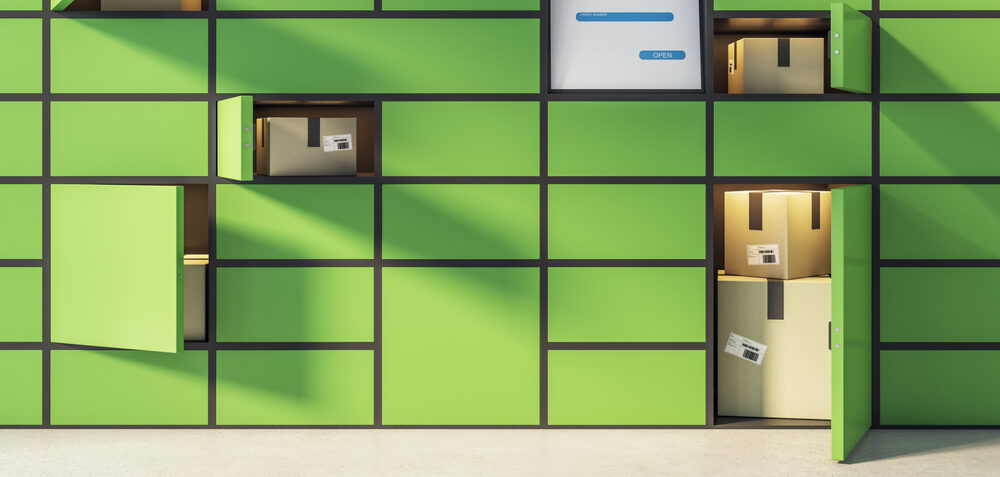It’s obvious that population density makes a huge difference to delivery efficiency, both in terms of cost and sustainability, so how can carriers make their delivery propositions more sustainable across rural and urban areas alike? And crucially, how can they drive wider adoption of sustainable delivery options across the board?
In a recent research report, we looked at the ways in which out-of-home (OOH) delivery can drastically reduce emissions associated with the last mile, and how that plays out depending on the ways consumers access the network.
Population density and network density are key
Several factors influence the sustainability benefits of OOH, including the carrier’s drop density and current home delivery routes, the location and coverage of their network, and how the consumer accesses that network.
Urban or densely populated areas tend to have the most drastic emissions reductions through out-of-home delivery, as the network tends to be denser, and consumers are more likely to collect on foot, bike or other low-emission transportation. CPost International provided an excellent case study of this at a recent event, detailing the launch of community mailboxes on the island of Curacao, where population density is relatively high at 370 per km2.
Installed in accessible outdoor locations near residents’ homes, community mailboxes are a set of lockable mailboxes in which every household will have a dedicated box and a key. Instead of delivering to each household, CPost can consolidate hundreds of deliveries to a single location. Doing so has taken CPost from having to serve 80,000 addresses to just 150 locations. This decrease has reduced the need for delivery vehicles by 80% on the island, reducing the miles driven per delivery and drastically cutting emissions per parcel.
Clearly it will be harder to reach the same kind of carbon emission reductions in less densely populated areas, particularly if there are limited drop-off points. The more spread out the collection points are, the more likely consumers will be to make a dedicated car trip for collection, which usually results in increased emissions compared to home delivery.
However, investing in OOH infrastructure in these areas will reduce consumer distance. The closer a consumer is to a pickup point, the more likely they will be able to travel on foot or as part of their routine journeys, for example commuting, picking up children from school, or going to a grocery store. Trip chaining these collections ensures that out-of-home delivery reduces carbon emissions. InPost also notes in its annual report that it sees proximity to lockers as a key determinant of initial consumer adoption and usage frequency.
In other words, investing in more OOH locations so that more options are closely accessible will tend to result in more volume into each location as shopper usage increases, helping to counteract the dilution of volume across more locations. At some point however, having more and more collection points will reduce drop density and start to reduce the CO2 (and cost) savings potential of the network. Carriers need to be able to rapidly analyze the performance of each collection point in their network to determine its overall effectiveness.
To be confident of OOH networks realizing their potential for emissions reductions, there has to be enough volume to enable the benefits of consolidation – which means consumers have to be choosing out-of-home delivery at the checkout. Providing the information and incentives for them to do so is down to the carrier and the merchant.
Increased sustainability starts by giving consumers choice
We know that sustainable delivery options are becoming more important to consumers when shopping online. According to the 2021 Dirty Delivery Report, 34.25% of UK shoppers consider carbon offsetting as important as free delivery and 39.3% are more likely to purchase through retailers offering eco-friendly delivery options. Meanwhile, a report from Vanarama showed that 43% of UK shoppers would pay £1 (US$1.25) or more for eco-friendly delivery.
Consumers are more inclined to buy from retailers offering sustainable options. However, during the ‘Designing the ultimate flexible delivery experience’ panel at Leaders in Logistics in March 2022, it was revealed that only 3% of people in the UK feel they are being given the right information on sustainability.
Simply advertising that one option is greener than another is a good start, but one most checkouts, even those with OOH delivery options, don’t manage. Even better would be a checkout where average emissions reductions for specific delivery options were clearly displayed.
It’s up to carriers to analyze not only how OOH delivery affects their emissions profile, but to understand the ways consumers access their network. They need to measure how the sustainability benefits change depending on the density of the network and population density and incorporate those data points into future network development and checkout messaging to consumers.
Offering genuinely scientific and trustworthy information about sustainability actively encourages consumers to make the decisions they say they’re keen to make and will help carriers themselves become much more sustainable in the last mile.
Find out more about last-mile sustainability in Doddle’s latest report: Why the last mile is less sustainable than ever, and what we can do about it.


